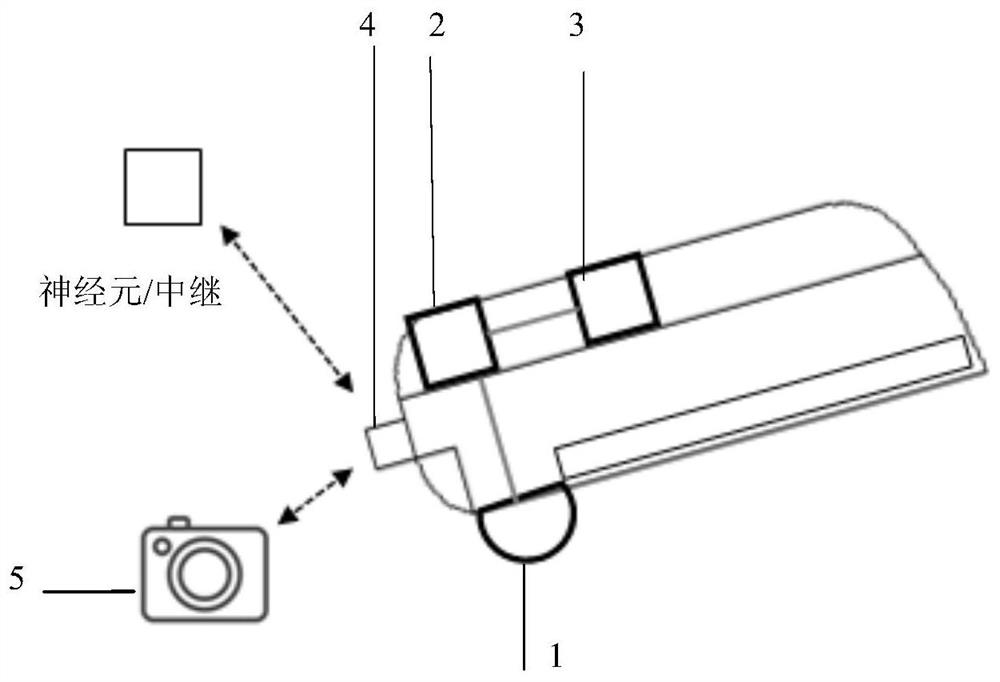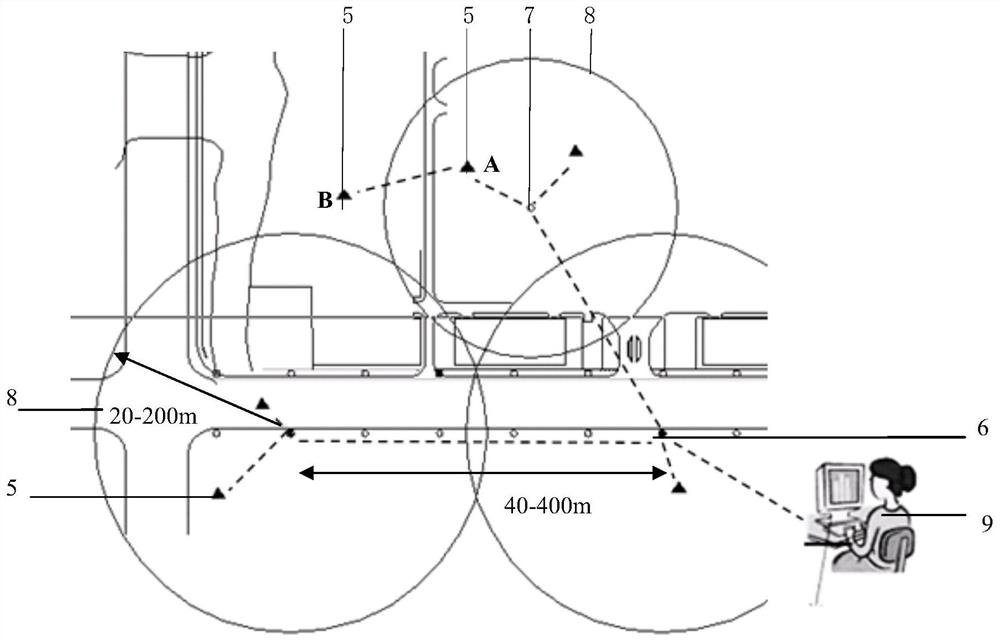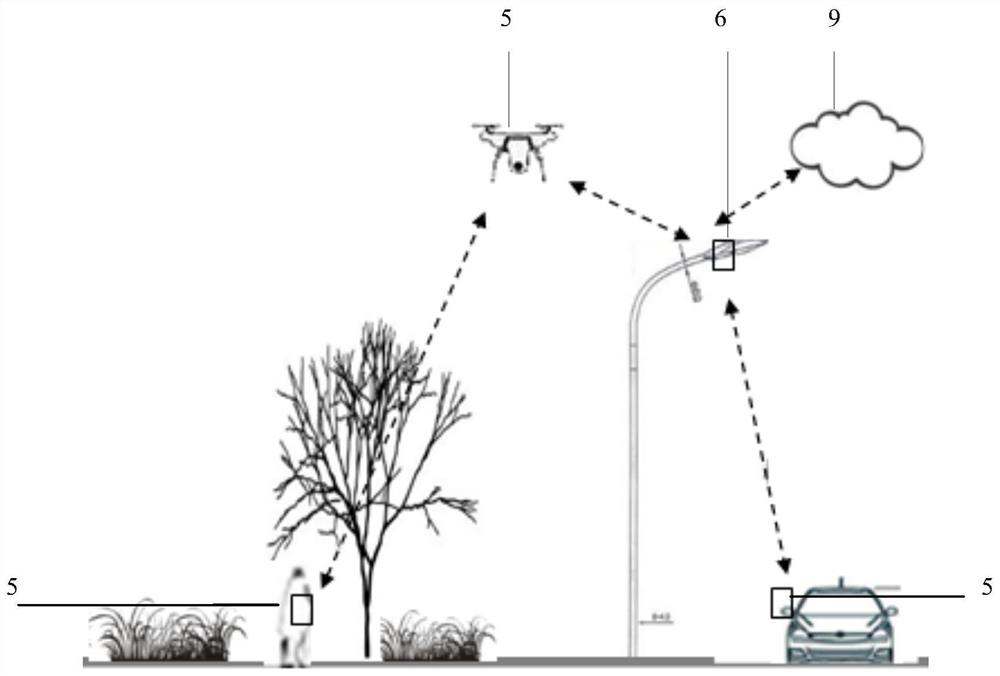Urban retina system based on mobile side end node
A node and network technology, applied in the field of multi-level edge node camera analysis platform, can solve the problems of inability to real-time feedback, poor real-time and accuracy, difficult to identify, etc., to achieve high computing efficiency and perception level, efficient summary effect
- Summary
- Abstract
- Description
- Claims
- Application Information
AI Technical Summary
Problems solved by technology
Method used
Image
Examples
Embodiment Construction
[0017] figure 1 Explain the composition of neuron nodes. The node is integrated with the lamp, including the main camera 1, processor 2, memory 3 and wireless module 4. The main camera 1 is a panoramic camera with a pan-tilt, which can rotate 360°. The processor 2 is used for recognition and calculation of image elements, and Process the relay data of other nodes, the memory 3 is used for data storage, including two parts of local data and relay data, the wireless module 4 establishes two communication links, uplink and downlink, and the neuron nodes are connected to each other by uplinks. The service radius of the downlink is 20-200 meters, connecting all edge cameras 5 in the service area, and taking into account the shooting effect of the main camera 1 at the same time. This type of node can also be installed independently outside the luminaire.
[0018] figure 2 Explain how neuron nodes and edge cameras build a retina system. The neuron nodes 6 form a downlink service...
PUM
 Login to View More
Login to View More Abstract
Description
Claims
Application Information
 Login to View More
Login to View More - R&D
- Intellectual Property
- Life Sciences
- Materials
- Tech Scout
- Unparalleled Data Quality
- Higher Quality Content
- 60% Fewer Hallucinations
Browse by: Latest US Patents, China's latest patents, Technical Efficacy Thesaurus, Application Domain, Technology Topic, Popular Technical Reports.
© 2025 PatSnap. All rights reserved.Legal|Privacy policy|Modern Slavery Act Transparency Statement|Sitemap|About US| Contact US: help@patsnap.com



